Cooperative Key, Szolnok - 1996
A Varsói Szerződés összeomlását követően nem sokkal Magyarország bejelentette azon szándékát, hogy a NATO tagja szeretne lenni. Részvételünk a Partnership for Peace programban egy komoly lépést jelentett a tagság felé. 1996-ban egy nagyszabású gyakorlat került megrendezésre a PfP keretein belül: a Cooperative Key.
Az esemény alapvetően humanitárius feladatok gyakorlását szolgálta (katasztrófa utáni mentést és mentesítést), de repülés-tilalmi zónák kikényszerítését is gyakorolták. A vadászgépek Kecskemétről üzemeltek: német, magyar és lengyel MiG-29-esek, amerikai F-16-osok és spanyol Mirage F.1-esek. Minden más gép Szolnokról szállt fel és le. Az utolsó nap során a civilek is betekintést nyerhettek a gyakorlat elemeibe. Az aznapi terv egy súlyos földrengés utáni komplex mentési gyakorlat végrehajtása volt. A nézők minden bevetés előtt szakszerű magyarázatot hallhattak magyar és angol nyelven - hangsúlyozva, hogy ez nem egy repülőnap, hanem a gyakorlat bemutatója, a nagyközönség számára.
A program egy felderítő F-16-os áthúzásával indult, ami gyors áttekintést nyújtott a pusztítás mértékéről. A Vipert egy román An-30-as követte, mely már részletes adatokat szolgáltatott a területről. A felderítés utolsó lépcsőjét magyar ejtőernyősök jelentették, akik An-26-osból ugrottak. Azonnali segítségnyújtásként egy osztrák PC-6-os és egy magyar Mi-8-as tűzoltási képességeiket mutatták be, majd egy belga C-130-as dobott ki élelmiszert a túlélőknek nagyon kis magasságból - ejtőernyő nélkül. A kutató-mentő bevetéseket két hullámban repülték. Az elsőben egy MH-53-as és magyar Mi-8-asok repültek együtt. A második hullám német UH-1-eskből, szlovén AB-412-eskeből, román Pumákból és egy-egy lengyel W-3 Anakondából és cseh Mi-8-asból állt.
Az amerikaiak bemutatták MH-53-asuk arcvonal mögötti utántöltését is. Ezt egy francia C-160-as légi utántöltési bemutatója követte volna, melyet azonban törölni kellett az erős szél miatt. A nyílt nap utolsó szakaszában a vadászgépek áthúzását láthatta a közönség: a Kecskemétről felszállt első csoportot egy-egy német, lengyel és magyar MiG-29-es és egy aviano-i F-16-os alkotta. Őket egy spanyol Mirage géppár követte, amivel be is fejeződött a rövid, de nagyon érdekes program.
A gyakorlat sikere fontos lépést jelentett azon az úton, mely 1999-ben fejeződött be, Magyarország meghívásával a NATO-ba.
show english summary of Cooperative Key Open Day, Szolnok, 1996
Cooperative Key Open Day, Szolnok, 1996
Following the collapse of the Warsaw Pact Hungary declared that it wants to be a member of the NATO. One of the steps towards the Organisation was to participate in the Partnership for Peace program. In 1996 a large scale exercise was organised within the structure of the PfP, Exercise Cooperative Key.
The exercise was of humanitarian nature, mainly focusing on disaster relief operations, but it included training to enforce no-fly zones also. The fighter forces were based at Kecskemét, consisting of German, Hungarian and Polish MiG-29s, American F-16s and Spanish Mirage F.1s. All the other assets operated from Szolnok.
On the last day of the exercise during an open day the public had the opportunity to get an insight of the operation. The event was organised as a complex disaster relief exercise, simulating the operations following a heavy earthquake. The spectators could hear professional explanations of every mission flown in Hungarian and English - emphasising that it is not an air show, but the demonstration of the exercise.
The program began with a recce F-16 flyby, to get a quick picture of the devastation. The Viper was followed by a Romanian An-30, to get detailed data. The last step in the recce process was made by paratroopers dropped by a Hungarian An-26.
As an immediate help, an Austrian PC-6 and a Hungarian Mi-8 made firefighter demonstration, followed by low-level food extraction - without parachutes - from a Belgian C-130 for the survivors.
The search-and-rescue missions were flown in two waves. The first one included an MH-53 and Hungarian Mi-8s simultaneously. The second wave consisted of German UH-1s, Slovenian AB-412s, Romanian Pumas, Polish W-3 Anakonda and Czech Mi-8.
The Americans demonstrated the use of behind-the-lines refuelling of their MH-53 also. It would have been followed by a French C-160 air to air refuelling flight, but it had to be cancelled because of the strong gusts.
The last part of the open day was a flyby of the fighters from Kecskemét - the first team consisted of a German, a Polish and a Hungarian MiG-29 each, escorted by an Aviano F-16. These fighters were followed by a pair of Spanish Mirages, ending the small, but very interesting show.
The success of the exercise was probably an important step in the process which ended in 1999, Hungary's invitation to the NATO.

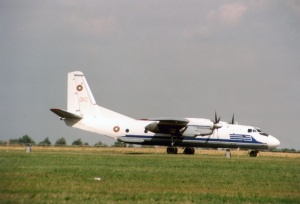
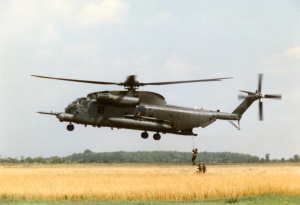
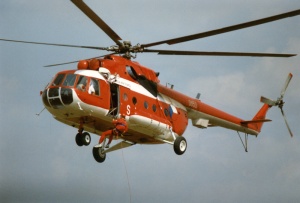
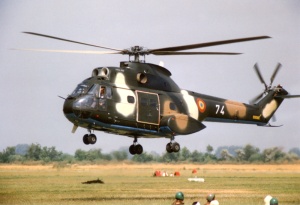
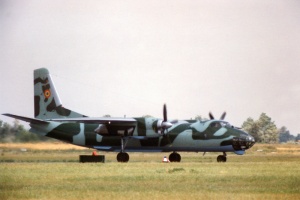
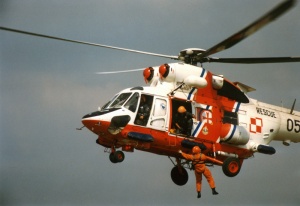
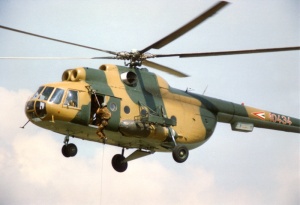
Legyél Te az első hozzászóló!